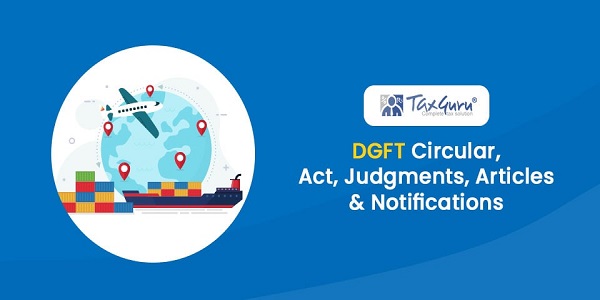In response to an increasingly complex and dynamic regulatory environment, tax authorities and professional advisors are turning to advanced data analytics and Artificial Intelligence (AI) to streamline compliance processes and provide comprehensive support to a diverse range of clients and taxpayers. The integration of AI into taxation represents a cutting-edge development, offering revolutionary advancements in addressing typical tax challenges.
What is Artificial Intelligence?
In finance, Artificial Intelligence refers to the utilization of technologies like machine learning to simulate human intelligence and decision-making processes. This enhances how financial institutions analyze, manage, invest, and safeguard funds. AI capabilities include personalizing products and services, identifying and managing risks and fraud, ensuring transparency and compliance, as well as automating operations to increase efficiency and reduce costs.
Compliance with Taxation laws and regulations.
Tax compliance stands as a cornerstone of fiscal responsibility, encompassing the process accurate and timely fulfillment of tax obligations. Non-compliance with tax laws can have severe repercussions, including hefty financial penalties, accrued interest on unpaid taxes, and potential legal ramifications. Persistent non-compliance may also trigger audits, which can be resource-intensive, time-consuming, and financially burdensome for individuals and businesses alike.
AI systems can process vast amounts of data swiftly and can helps identifying patterns that may signal compliance concerns. This capability is particularly valuable in India, where regulatory standards are rigorous and the repercussions of non-compliance can be significant.
Traditional Taxation Compliance before AI:
Before the integration of Artificial Intelligence (AI), traditional tax compliance methods relied heavily on manual processes and old-fashioned practices. This included manually inputting tax data into systems, which increased the chances of errors and required extensive verification. There was minimal automation in tax calculations and reporting, resulting in longer processing times and possible delays. Taxpayers kept hard-copy records, causing paperwork intensive processes and storage challenges. Moreover, Compliance checks and audits were also heavily relied on human analysis for reviewing documents, using manual sampling methods that were time-consuming and less efficient compared to AI-driven analytics
Understanding of complex tax laws was difficult and often required professional advice. Risk assessment and fraud detection were reactive, relying on historical data and periodic audits rather than real-time predictive analytics. Taxpayer support primarily used traditional channels such as tax offices and customer service centers.
Introduction of AI in Taxation:
AI technologies offer significant benefits to individuals and professional firms involved in tax research by seamlessly integrating it into their workflow. These technologies can provide anticipatory prompts based on client data and evolving regulations, thereby enhancing efficiency and accuracy. This integration will also help in streamlining the research process, reduce time spent on verifying sources, and facilitate a deeper understanding of implications. Additionally, AI can synthesize research findings and generate tailored communications that effectively convey the implications of tax-related research to each client.
Governments and tax authorities worldwide are increasingly embracing AI to transform tax administration processes. AI-powered systems can play a pivotal role in identifying anomalies and detecting patterns indicative of tax evasion through advanced data analytics and pattern recognition capabilities. This enables tax authorities to optimize resource allocation for enforcement activities, thereby enhancing compliance and contributing to the maintenance of a fair and transparent tax system. By leveraging AI, governments can improve decision-making processes, mitigate risks of non-compliance, and enhance overall effectiveness in tax administration.
Impact of AI on Tax Compliance Standards
Artificial Intelligence (AI) has revolutionized tax compliance across several key areas:
- Automating tax return preparation and filing: AI enhances tax operations by automating routine tasks such as preparing and filing tax returns. AI-powered software, often integrated with Robotic Process Automation (RPA), accurately extracts data from sources like trial balances and invoices, organizing it into required tax forms.1
- Monitoring tax compliance and improvement: AI aids in monitoring and improving tax compliance by providing timely alerts on new tax regulations. This approach helps businesses mitigate risks associated with noncompliance, such as financial penalties and reputational damage.
- Enhancing the tax audit process and fraud detection: AI improves the efficiency of tax audits by analyzing historical data to identify compliance weaknesses. It also assists tax authorities in detecting anomalies and potential fraud through analysis of large datasets, ensuring the integrity of the tax system.
- Forecasting and predictive analytics: AI algorithms analyze sales data to identify trends across various tax filing cycles (annual, quarterly, monthly). Businesses gain insights to optimize strategies, reduce costs, and enhance profitability in a competitive post-pandemic landscape
- Augment data management: Tax and accounting professionals often face the challenge of managing vast amounts of client data, from general ledgers and journal entries to employee records and unsorted documents. AI-powered document processing technology automates data extraction and organization from diverse sources, saving time and improving accuracy in tax, accounting, and audit tasks.
- Strengthen customer relationships: AI enables firms to offer personalized services and proactive client engagement through chatbots and automated client communications. This enhances client satisfaction and efficiency in account management.
- Identify tax advisory opportunities: AI helps firms identify client-specific tax events, enabling timely outreach and provision of value-added services. By explaining tax changes and offering tailored recommendations, firms enhance client compliance and revenue generation as trusted advisors.
Expected Growth
The integration of AI into India’s taxation system presents a complex landscape with both opportunities and challenges that warrant in-depth investigation, necessitating thorough investigation. The Indian government’s sustained investment in digital infrastructure, coupled with the escalating integration of AI technologies by financial technology firms, indicates substantial sectoral growth.
Several driving factors contributing to this growth are:
- Increasing Compliance Requirements: The intricate and evolving tax laws in India necessitate advanced AI solutions to ensure compliance and combat tax evasion, thereby stimulating market growth.
- Cost Efficiency: AI-powered systems can potentially reduce operational costs for both tax authorities and taxpayers by automating routine tasks, minimizing errors, and expediting processes. This cost-effectiveness is likely to drive wider adoption across the sector.
- Technological Advancements: Rapid advancements in AI and machine learning technologies are facilitating sophisticated tax solutions, including predictive analytics for detecting tax fraud and AI-driven advisory services.
- International Trends and Pressures: Global adoption of AI in taxation is creating pressure for India to keep pace with international standards. This external influence may accelerate the integration of AI technologies in the Indian tax system
Case Study: Deploying AI Solutions for data mining, generating automated notices and driving government revenue for GST.
Mr. Nitin Ramesh Gokarn, Additional Chief Secretary, Housing and Urban Planning and State Tax Department, Government of Uttar Pradesh, led a significant initiative to enhance the efficiency of the GST system in the state, by leveraging artificial intelligence.
The Government of Uttar Pradesh faced challenges with bogus Input Tax Credit (ITC) claims, which affected the overall GST revenue. To address this issue, a comprehensive system was developed to ensure 100% verification at the time of registration. This proactive approach aimed to plug all loopholes and prevent fraudulent claims. The pivotal development in this initiative was the creation of the AI module, an automated notice generation system based on database mismatches in returns filed. The AI module has generated six lakh notices, resulting in GST deposits of Rs.980 crores2 during the Financial Year 2023-24. The development of this AI tool, costing Rs.18 lakhs, was facilitated with the expertise of IIIT Lucknow. This implementation allowed the department to collect more revenue without changing the GST rates.
The AI tools selected for deployment were identified by the State Tax Department’s technical teams after conducting studies on the best practices adopted by various states across the country. They were particularly impressed by the models implemented in Telangana and Andhra Pradesh, where AI tools were effectively used for data mining and automated notice generation. Inspired by these models, Uttar Pradesh decided to incorporate a similar AI system within their GST framework.
The Government of Uttar Pradesh’s initiative to integrate AI into the GST system serves as a commendable case study in using technology to enhance governance and revenue collection. By learning from the best practices of other states and adapting those models, Uttar Pradesh has set a benchmark in effective tax administration
Challenges and Considerations
The tax industry thrives on expertise and meticulous application of rules to unique scenarios, attracting individuals skilled in complex problem-solving. However, there exists a cautious approach towards unfamiliar technologies, especially those perceived as disruptive or risky to operations. AI, being inherently probabilistic, can sometimes produce outcomes that may be deemed “incorrect” by traditional standards. Yet, it’s important to note that human decision-making in tax matters is also prone to errors.
The accuracy and reliability of AI algorithms are crucial, given that inaccuracies or biases could result in erroneous tax assessments or compliance issues. Furthermore, the handling of sensitive taxpayer information necessitates strict adherence to robust data privacy regulations, ensuring security and confidentiality. Moreover, AI must adeptly interpret complex and dynamic tax laws across diverse jurisdictions, each with its own intricacies and applications. Ethical concerns also emerge regarding AI’s potential impact on job displacement and the fairness of tax assessments, necessitating strategies to promote equitable outcomes.
The integration of AI with existing tax systems and workflows introduces technical and operational challenges, including compatibility issues and stakeholder resistance to change. Regulatory compliance is paramount, requiring transparency and accountability in all AI-driven tax-related decisions. Lastly, equipping tax professionals with the requisite skills and training to effectively oversee AI-driven processes is essential for harnessing AI’s full potential in taxation while mitigating associated risks.
Future Opportunities:
The future of AI in taxation in India holds tremendous promise, poised for significant growth in the years ahead. This expansion opens up abundant opportunities for technology providers, financial institutions, and businesses alike. AI promises to revolutionize tax systems, making them more efficient, accurate, and transparent.
One of the exciting prospects is the concept of a ‘no-touch’ tax return3, where every stage of tax preparation and compliance is fully digital and automated. This includes collecting client data and delivering the finalized tax return promptly. Such advancements are not merely theoretical but achievable with existing technologies.
Consider the current landscape where tax professionals often grapple with labor-intensive and repetitive tasks. AI can streamline these processes, allowing professionals to focus on higher-value activities such as strategic tax planning and client advisory services. This shift not only enhances productivity but also improves the overall quality and precision of tax-related outcomes.
Conclusion:
Currently, AI is predominantly utilized for compliance purposes in taxation, primarily handling straightforward tax returns. Its effectiveness is limited when confronted with unfamiliar scenarios or issues that require complex information retrieval and interpretation. This constraint is particularly evident in cases involving intricate tax laws, international transactions, or unique business structures.
As AI continues to adapt, its integration into the tax ecosystem will increase its efficiency in tax collection, decrease compliance burdens for taxpayers, and progressed resource allocation for tax authorities. This technological shift holds the promise of making a greater resilient and equitable tax system for the future – one which could adapt extra speedy to financial modifications and make certain fair contributions from all segments of society.
By proactively addressing demanding situations and capitalizing on possibilities, India can function itself at the forefront of AI-driven tax innovation, developing a more efficient, transparent, and equitable tax device for the 21st century.
Reference
1. PricewaterhouseCoopers, “Empowering Tax Operations With AI,” PwC, https://www.pwc.com/ph/en/tax/tax-publications/taxwise-or-otherwise/2023/empowering-tax-operations-with-ai.html
2. Arpit Gupta, “GST: Deploying AI Solutions for Data Mining, Generating Automated Notices & Driving Govt Revenues,” Com, May 24, 2024, https://government.economictimes.indiatimes.com/news/technology/gst-deploying-ai-solutions-for-data-mining-generating-automated-notices-driving-govt-revenues/110370822.
3. Wolters Kluwer Tax And Accounting, “How to Achieve a No Touch Tax Return,” Wolters Kluwer, March 1, 2021: https://www.wolterskluwer.com/en/expert-insights/how-to-achieve-a-no-touch-tax-return

























